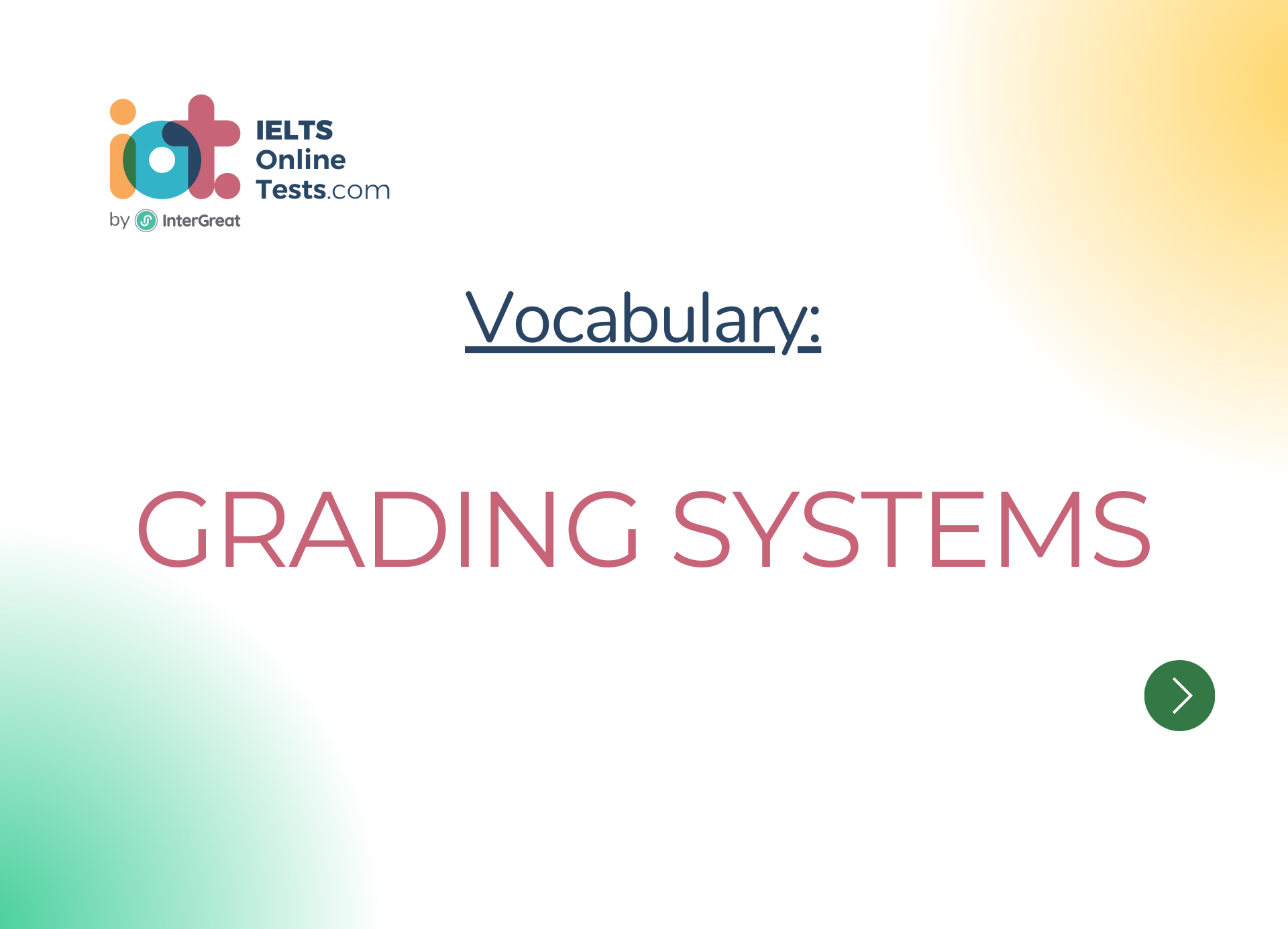
Grading systems
Here's a lesson on vocabulary related to "Grading Systems" for the IELTS band score 3.0-4.5:
I. Letter Grades:
A: Excellent or outstanding performance.
B: Very good or above-average performance.
C: Satisfactory or average performance.
D: Below average performance.
F: Fail or insufficient performance.
II. Numeric Grades:
90-100: Outstanding performance.
80-89: Very good performance.
70-79: Good performance.
60-69: Satisfactory performance.
Below 60: Insufficient performance or fail.
III. Pass/Fail:
Pass: Achieving the minimum required level of performance.
Fail: Failing to meet the minimum required level of performance.
IV. Grading Scale:
Grading Curve: Adjusting grades based on the performance of the entire class to ensure a fair distribution.
Weighted Grading: Assigning different values or weights to different assignments or categories.
Percentage Scale: Assessing performance based on the percentage of correct answers or completed tasks.
Point System: Assigning points to different assignments or tasks and calculating a cumulative score.
Grading Rubric: A set of criteria or guidelines used to evaluate and assign grades to student work.
V. Marking Criteria:
Accuracy: The correctness or precision of the work.
Completeness: The extent to which all requirements or elements are included.
Organization: The structure and coherence of the work.
Creativity: The originality or innovative aspects of the work.
Critical Thinking: The depth and quality of analysis or evaluation.
VI. Evaluation Methods:
Objective Assessments: Assessments that have clear and definitive answers, such as multiple-choice or true/false questions.
Subjective Assessments: Assessments that involve subjective judgment or interpretation, such as essays or open-ended questions.
Continuous Assessment: Assessing students' progress and performance throughout a course or semester rather than through a single exam.
Self-Assessment: Students evaluating their own performance and progress.
Peer Assessment: Students evaluating the work of their peers.
VII. Feedback:
Constructive Feedback: Feedback that provides suggestions and guidance for improvement.
Written Feedback: Comments and suggestions provided in writing on assignments or tests.
Verbal Feedback: Feedback given through spoken communication, such as in-person discussions or recorded audio feedback.
Individual Feedback: Feedback tailored to the specific strengths and weaknesses of each student.
Timely Feedback: Feedback provided promptly after completing an assessment or task.
Remember to practice using these vocabulary words in sentences and conversations to improve your understanding and fluency in English.




